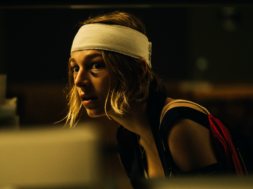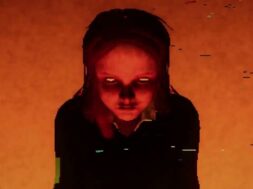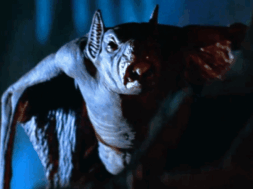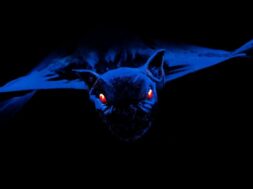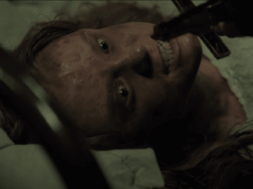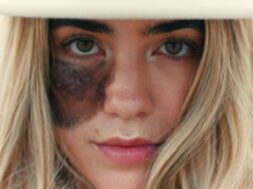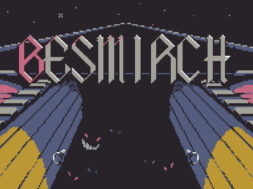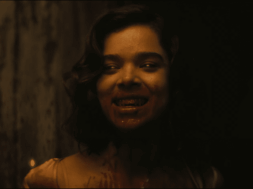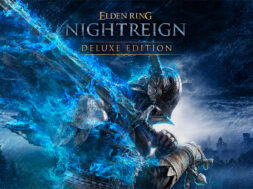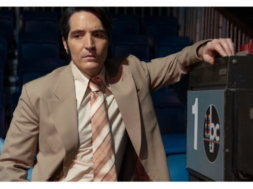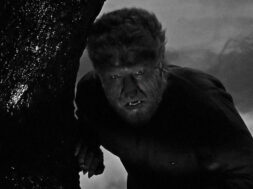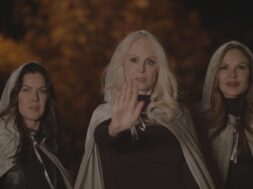
Cuckoo director Tilman Singer joined us to chat about the pain in the ass (and ultimate payoff) of utilizing practical effects, potential sequel concepts, the role John Malkovich was originally set to play, and more.
Starring Hunter Schafer (Euphoria, Kinds of Kindness, Hideo Kojima and Jordan Peele’s mysterious upcoming OD game) and Dan Stevens (Abigail, The Guest), Cuckoo (which was shot on glorious 35mm) follows:
17-year-old Gretchen [who] reluctantly leaves her American home to live with her father, who has just moved into a resort in the German Alps with his new family. Arriving at their future residence, they are greeted by Mr. König, her father’s boss, who takes an inexplicable interest in Gretchen’s mute half-sister Alma. Something doesn’t seem right in this tranquil vacation paradise. Gretchen is plagued by strange noises and bloody visions until she discovers a shocking secret that also concerns her own family.”
Read our full interview with Tilman Singer below.
This isn’t a spoiler because it’s in the trailer; when Hunter is riding the bike, we see her shadow on the road, and suddenly, we get this very Nosferatu moment of another shadow chasing her and closing in. Was that a practical effect? How did you create this scene?
Oh, yes. That was a fight because we had to shoot this entire scene biking down the road in one night. We shot in Germany, and I think we had a good four and a half hours of nighttime before the sun came out. It was this race against the sun. It was quite difficult to do, and it was all practical. We already had a trailer with the crane and the camera and everything to shoot from different angles, and then we put our bike onto the trailer to shoot low-angle shots.
In the end, they had to give us stronger streetlights. I don’t know how many feet or meters away, but our cinematographer did a 3D scenario where he figured out how far apart they should be, where you can see her shadow and the shadow of the person running, but not the camera car. It was quite tricky with that shadow creeping in, the hand coming up. That was one of the last things we did that night.
We were almost unable to pull it off because it was such a fragile thing to get it absolutely right, where you see her shadow passing by and then the other person’s shadow coming. When you get these things right, it’s so rewarding.
The second shadow, was that somebody actually running, or were you all on a rig?
Oh, yeah. Kalin was actually running behind Hunter on the bike, that was all there.
For the actors, it must be helpful to have something tangible to work with.
I think it’s important that it’s real because it helps the actors. It’s a real thing. We’re doing it for real, they can chase each other. It’s fun, but it’s thrilling too, so you don’t have to make believe, “Oh, yeah, the shadow or the hand will come later in post.” Better to get it in the camera.
What I like about shooting stuff in camera is it’s never “perfect” and it shouldn’t be. It’s the thing that we got on the day. If you can make it in post, you can manipulate it to “perfection,” but to death. It can become a sterile thing that doesn’t live anymore. These little imperfections you have to edit around give you a unique pace that is not just done by trial and error. It lives. I love that.
You’ve got a great cast here. Hunter is incredible, and Dan Stevens is having such an interesting career. He could very easily play it safe, but instead, he’s consistently going out of the box, and choosing the weirdest roles. I’m having such a good time watching him clearly enjoying this career. How did you land on Dan Stevens, and what was it like working together?
Well, Dan actually came on board very close to shooting. We had John Malkovich attached for the longest time, and our schedules didn’t work out, so we had to recast. Dan came in, and I had this conversation with him, not far from having to shoot. We immediately liked each other, and we were joking around. Dan told me he didn’t think the character needed to be 60-plus as it was written. It just had to be symbolically 60-plus, a grandfatherly figure or something.


Dan told me about a quirky and esoteric German person he likes. We immediately had this. It felt like we became friends then and there during our first phone call. That’s the vibe for me working with Dan.
It was a very trusting relationship. Working with a friend, trying out ridiculous stuff, but knowing we’re going in the right direction. We absolutely take it seriously with all the ridiculousness, but it is still a very serious approach. You never put a hat on a hat comedically. You always try to have it somewhat grounded and be a real thing within that world. And Dan is such an incredible actor.
Also, I feel like Dan is also a first-take actor. That’s not a necessity. Sometimes, it’s very good working out a thing, doing another take, or giving it a different spin, but most times, I felt like he was prepared. We did a little rehearsal, and then we shot. In the first take, I was like, “Well, yeah, that was kind of it. We’re good.” Dan always says, “Okay, let’s go again. Let’s do it.” And I’d think, “Okay. I don’t have notes, but let’s do it.”
Is there anything you guys just played around with that got a little too ridiculous, or was it always in the realm of what it needed to be?
I think we had it figured out when we started shooting, but it was all really conversational beforehand. I think he was going for a way more expressive approach that was a little bit more, I guess, unnatural. Then we changed a couple of things. In the script, he was yelling at the end, and Dan said, “No, this guy never yells. He should never yell.” I was completely on board with that. “Yep, that’s right. That’s out of character for this guy that we now have in our heads.”
These things changed, but I think the key was understanding how his character, Herr König, looks at people. He sees everybody as a subject in his grand experiment or operation, the thing that he needs to do. Everybody is like an inhuman part, and sometimes he gets very annoyed when they don’t do what he wants. His character also gets frustrated in a very petty sort of way, and it’s funny and beautiful to see. Through that, we got the character down, and we knew how he should behave.
Warning: Potential mild spoilers below.
Let’s discuss the design of your monster. What inspired the look?
I wanted to have a haunting presence. There needed to be something ghostly about her. I wanted to have a female beauty standard from a bygone era. That’s how we landed on this Marilyn Monroe hair. Then I had Audrey Hepburn in Charade — she has this scene where she’s wearing thick sunglasses, a headscarf, trench coat, and leather boots. In the end, that’s basically what we did.


Speaking about her “creature design,” I didn’t want it to go monstrous, inhuman. I wanted her to feel very much human and diseased, like she’s in a bad state. She doesn’t have to look like this, but she is mistreated, as we find out. We were looking at symptoms of disease, malnourishment, reddened eyes, unhealthy skin, and stuff like that.
Later, we did some special effects trickery where we focused a little bit more on that jaw that unhinges at some point. That was to emphasize her main weapon, that siren call. Again, I didn’t want to go for fangs or teeth. It was more of that voice coming out, getting you, hypnotizing you, catching you. That was important to me.
There are experiments involving how certain decibels and sounds can make you feel or affect you in a certain way. Was that part of your inspiration or research when you were doing this?
Not so much that. I knew the sound needed to be somewhat musical, and we tried several things. When the voice became too much of a woman singing, it fell apart, and when it became too much of an animal screech, it felt boring, so we had to marry the two somehow. I wanted it to sound like a creepy siren call, something very bodily but also can be ethereal and spread out. You hear it everywhere in the cinema. It comes from all angles. I really wanted it to feel like you’re in a haze of this otherworldly, hypnotic voice.
Do you have a weird collection of sounds now?
Yeah! The vocal artist stuff goes very crazy. We have all of this stuff saved. I’m sure it’s somewhere.
Throw it on a vinyl.
I mean, the soundtrack is coming out. [Sneakily] I’m sure there’s something on there.
Oh, okay! I love the use of the bass in this because Gretchen [Hunter Schafer’s character] plays the bass. Some parts of the score are very, very bass-centric, which I appreciated.
Somehow I knew she had to be a bassist. I don’t know why, but it had to be. That’s the right instrument for her. Then, you also hear Hunter’s voice in that song because our composer wrote that song for the movie. We couldn’t get the song that I wanted, it was too expensive. I asked our composer, “Can you write me a song in the style of the Jesus and Mary Chain?” He did, and it was beautiful! Then, later, we recorded Hunter’s voice, and she actually learned to play the bass for the movie and learned to play that.


It’s a really exciting time in horror right now. Neon is doing some really interesting things in the genre. What did it feel like to partner up with them and have them backing you on this?
Exactly that, backing us. There was so much trust. Our working relationship was so respectful, and they really helped us out. I loved working on the script and the edit with them, which can get really difficult. Editing a movie can be long and difficult, and there are many ways to do it, but we had a really good collaboration. I don’t think we could have gotten a better partner anywhere in the world. I’m so fucking happy that this worked out.
We’re also very fucking happy that it worked out. Would you be open to a sequel, or do you feel like you’re good with where you left this story?
I feel good about where I left this story, but I am not generally opposed to sequels, because there are fantastic sequels out there. I don’t know where it would go, but maybe.
We’ll take a maybe. Same characters, or different characters?
You know what? I would lean toward different characters, or maybe partly different characters. There are a lot of things that are unexplained on purpose or just vaguely explained in this world. Honestly, there’s quite a richer backstory than you can get from watching the movie, just things I had in my mind while constructing the entire thing. You could go after this for a little longer.
When I wrote the movie, I was thinking about the Neanderthals, the different species of human that used to live side by side with humans in Central Europe. If you are of Central European descent, then you likely have some Neanderthal DNA within you. That means that the two species crossbred at some point, and for whatever reason, they went extinct. My idea was, in our world, maybe there’s a different species of human, and they never went extinct. They’re just still there. It takes a Dan Stevens character to keep them alive in his mind.
Cuckoo is now playing exclusively in theaters. For more, check out our SXSW red carpet interview with Dan Stevens, and see our list of upcoming horror movies we’re excited about.
This interview has been edited for length and clarity.
